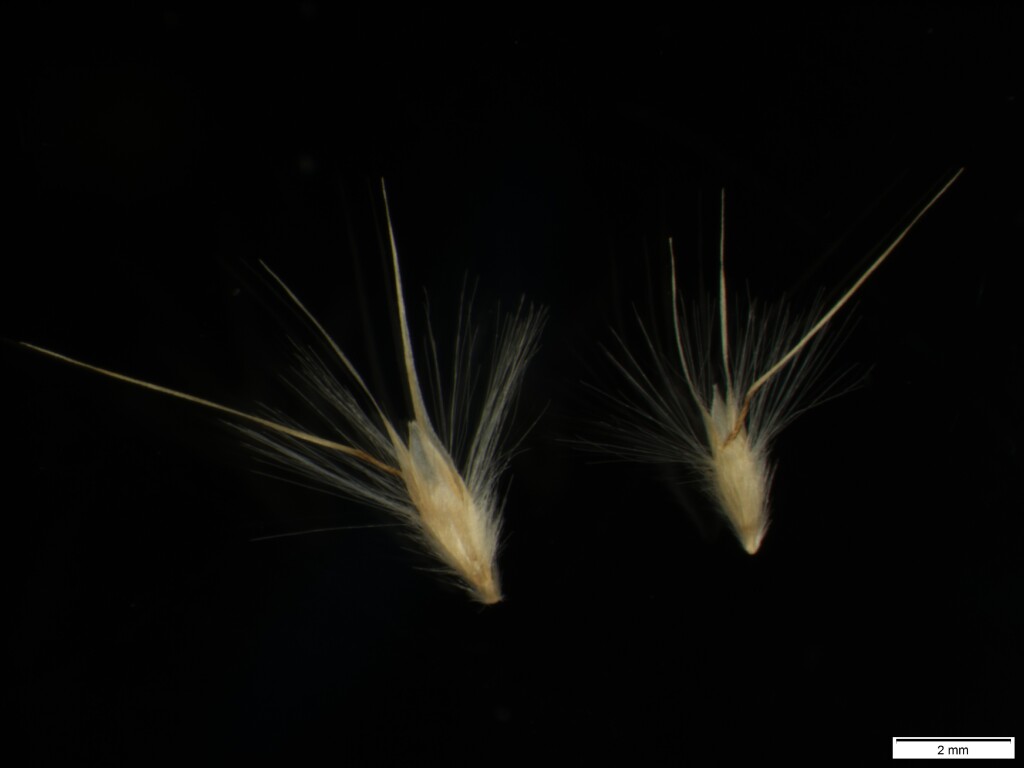Rytidosperma longifolium
(R.Br.) Connor & Edgar Long-leaf Wallaby-grassTufted perennial. Culms to 1 m high, mostly 4–7-noded, occasionally producing leafy tufts from nodes. Leaves glabrous; blade flat or channelled near base, typically finely inrolled and flexuose above, to 40 cm long and 2 mm wide. Panicle linear to narrow-lanceolate in outline, 5–15 cm long, the base often remaining enclosed by upper sheath. Spikelets rarely purplish, mostly 4–6-flowered; glumes subequal, narrow, acuminate, 8–13 mm long; lemma 2–3 mm long, more or less evenly covered by hairs 0.5–1.2 mm long, with a conspicuously longer upper series c. 3 mm long; lateral lobes erect, 5–7 mm long, exceeding the upper series of hairs by 2–4 mm, tapered gradually into the 2–3 mm long setiform tips; central awn very fine, pale and weakly twisted at base, exceeding lateral lobes by 2–6 mm; palea lanceolate, exceeding sinus by 1–2 mm. Flowers Sep.–Jan
LoM, Wim, VVP, VRiv, GipP, CVU, GGr, DunT, NIS, EGL, EGU, HSF, HNF, OtR, Strz, MonT, HFE, VAlp. Also Qld, NSW, ACT. Typically a grass of raised dry, rocky country, especially the rain-shadow areas of East Gippsland, with outlying occurrences in similar terrain north of the Great Dividing Range in the upper Kiewa and Ovens River catchments, near sea-level around the Gippsland Lakes and throughout the southwest.
Walsh, N.G. (1994). Poaceae. In: Walsh, N.G.; Entwisle, T.J., Flora of Victoria Vol. 2, Ferns and Allied Plants, Conifers and Monocotyledons, pp. 356–627. Inkata Press, Melbourne.
 Spinning
Spinning
